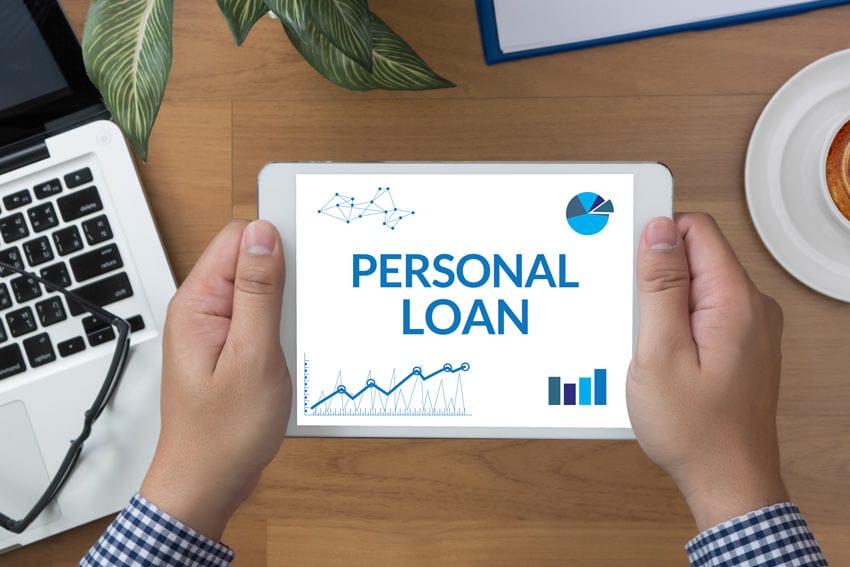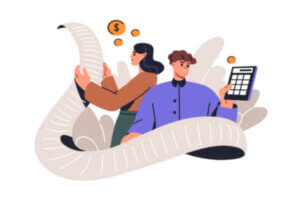Central air conditioners always die when you need them most. Rebecca discovered that on 100-degree afternoon last July.
Without warning, her 20-year-old AC system died. Three hours later, a repairman told her that the equipment was kaput and would never blow cold air again. The only solution was a new unit, priced at $5,000.
But where could Rebecca find $5,000?
She had a small emergency fund, but she didn’t have any credit available. Even if she spent her savings, she still came up $2,500 short.
Lots of Americans face the same sort of dilemma every day, and many opt for a small personal loan, turning to a bank or private lender for funds.
Navigating Personal Loans
But not all loans are the same. Some are straightforward, properly underwritten loans, repayable in a few months.
Others, offered by an assortment of predatory lenders, are designed to bleed the future earnings of gullible borrowers.
Most small personal loans are for $3,000 or less. Credit unions, banks and an assortment of online lenders offer these loans, which typically don’t require collateral but are contingent on the borrower’s creditworthiness.
Storefront or payday lenders are other options, but borrowers should be very wary of the terms, which can easily prove ruinous.
The Importance of an Emergency Fund
Financial advisers urge everyone to keep at least six months’ worth of income in an emergency fund. For Rebecca, who earns about $35,000 a year, a well-stocked emergency fund could have covered the new air-conditioner. Unfortunately, like many of us, she was still working on building her savings when the cool air stopped blowing.
What should she do?
First, even if she didn’t have a lot of money socked away, she should have been careful to pay her bills on time before the emergency arose. Why? A good credit score can be a passport to a small loan with a low interest rate and affordable balance. Without collateral, lenders want to know you’re good at paying debts on time. A solid credit score offers evidence of that.
If you have debt problems, making an appointment with a nonprofit credit counselor might be a good idea. Paying down debt and boosting your credit score can be a form of insurance if you suddenly need to borrow money quickly and don’t want to be hit with triple-digit interest rates.
5 Criteria for an Affordable Personal Loan
Next, become familiar with what small personal loans are. Typically, for a small loan to be considered affordable and well-conceived, it must:
- Carry a low interest rate, something in single digits is preferable, but if not, a maximum annual interest rate of less than 20%.
- Choose a lender that uses responsible underwriting standards, only lending amounts that a borrower has the wherewithal to repay.
- Have a repayment period of at least three months.
- Offer fixed payments on the loan, meaning the monthly payments won’t balloon at the end of the loan period. With a balloon payment, a borrower often has to pay the full amount borrowed after paying interest bi-weekly for several months.
- Not include check-holding or automated payment provisions with which the lender can withdraw money from the borrower’s checking account when payments are due.
Where to Find a Personal Loan
Once you understand the parameters, it’s time to go shopping. If you are a member of a credit union, that would be a good first stop when researching where to borrow money. Credit unions often aren’t as interested in your credit score as your debt-to-income ratio – the amount of debt you’re carrying related to your income. Federal credit unions can’t charge more than 18% annual interest. If you are a member in good standing with the credit union, the rate might be a good deal less.
Online lenders are another option, but be prepared to pay more interest. Many lenders offer loans in the $1,000 to $3,000 range. Most of these lenders, with names like Lending Club and Avant, are most interested in your credit score, your borrowing history and how much you earn. Before you enter an online loan, make sure you’re very familiar with the terms. Check for origination and late fees as well as information on how the repayment schedule works.
Banks are another option, though the large national banks don’t all offer personal loans. Community banks might offer a better alternative, as they try to build relationships with local customers and might offer loans that national banks would avoid. Generally, commercial banks set stringent requirements on applicants’ credit scores.
Be wary of the loan terms from any bank, which can carry high interest with a final balloon payment.
Then there are payday lenders and other loan stores that offer small high-risk loans. They frequently advertise that they don’t check the borrower’s credit history, but compensate with loan terms that allow them to make direct withdrawals from a borrower’s checking account. Combine that with high interest rates and that’s a risky proposition. You can find a lot better options than payday loans.
Some states regulate payday lenders, but this remains a controversial line of business, and many customers find themselves trapped by triple-digit interest rates that make such loans difficult and costly to repay.
As an example, consider a $300 loan with a 90-day payoff period. A payday lender typically might demand post-dated checks to withdraw payments from your bank account. Then, it charges $45 in interest and fees every 15 days, which means a total interest payment of $270 during the 90-loan period.
If the consumer pays it off in 90 days, the annual interest rate for that $300 loan is 360%. The total amount paid for the loan would $570 ($300 principal, plus $270 in interest and fees).
A conventional loan over the same period with a 36% APR would carry $2.66 in interest and fees payment every 15 days. Each installment would be $52.66, including interest and principal, and the loan would be paid back after 90 days. The total paid in this case would be $315.96 ($300 principal, plus $15.96 in interest and fees).
Small personal loan terms vary, and even bank loans can come with very costly terms – some amounting to 240% in interest and fees. For that reason, you should understand what you’re getting into before taking the money.
If possible, find another way to borrow what you need. Borrow from friends or family as an alternative.

5 MINUTE READ
Home » InCharge Blog »
Sources:
- (2014, January) Guidelines for Affordable Small Dollar Loans. Retrieved from: http://www.nclc.org/images/pdf/high_cost_small_loans/payday_loans/ib-affordable-small-dollar-loans.pdf
- Jayakumar, A. (ND). Where to Find a Small-Dollar Loan. Retrieved from: https://www.nerdwallet.com/blog/loans/small-dollar-loans/
- Jayakumar, A. (ND) Personal Loans for Bad Credit. Retrieved from: https://www.nerdwallet.com/blog/loans/personal-loans-bad-credit/

















